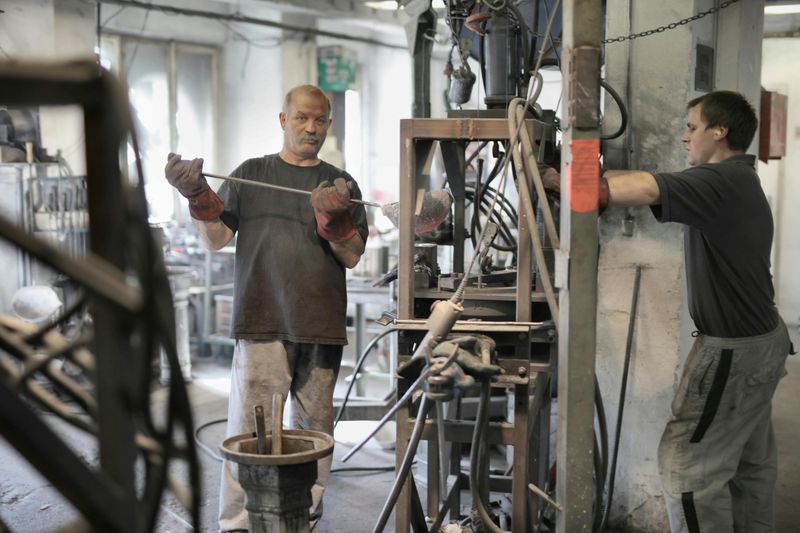Some careers quietly strain marriages long before couples notice the cracks. Odd hours, high emotional labor, and unpredictable income can erode time together and fuel conflict. While no job guarantees a breakup, trends in certain professions show consistently higher divorce rates. If you or your partner work in one of these fields, understanding the pressure points can help you protect what matters most.
1. Gaming Managers (Casino & Gambling-Floor Supervisors)

Gaming managers often navigate high-stakes environments, late-night shifts, and constant customer demands, which can drain emotional reserves by the time they get home. The intense schedule reduces quality time with spouses, while the cash-heavy, temptation-filled setting can heighten trust concerns. Workplace culture sometimes blurs boundaries between professional hosting and socializing, adding to marital friction. One study has noted a divorce rate around 52.9% among gaming managers, which signals systemic pressures rather than individual shortcomings. Proactive couples carve out non-negotiable downtime, set financial and social boundaries, and maintain open communication about workplace dynamics. Counseling and calendar discipline help, too. Awareness is key: understanding the industry’s rhythms can prevent resentment and protect connection.
2. Bartenders

Bartenders frequently work late nights, weekends, and holidays—exactly when partners are free—creating chronic schedule mismatches. The role involves emotional labor, active listening to patrons, and a social scene with alcohol, all of which can sap energy for home life. Some data suggest a divorce rate near 52.7%, pointing to structural stressors like irregular income and sleep disruption. Couples may struggle with jealousy or boundary-setting in flirtatious environments. Clear communication about tipping culture, post-shift wind-down, and safety can reduce conflict. Shared calendars, regular day dates, and phone check-ins help maintain intimacy. Setting limits on after-hours socializing and prioritizing recovery sleep are practical steps to keep the relationship resilient.
3. Flight Attendants

Flight attendants face erratic schedules, long layovers, and time-zone fatigue that complicate routines at home. Extended absences and standby uncertainty make planning family events difficult, while emotional labor with passengers can leave little bandwidth for partners. Some reports cite divorce rates around 50.5% in this cohort, illustrating the toll of distance and strain. Jealousy and trust concerns may emerge when travel stories and overnights stack up. Couples benefit from ritualized reconnection after trips, transparent itineraries, and tech-enabled togetherness (video calls, shared photo streams). Coordinating calendars months ahead and creating in-flight “letters” or voice notes can maintain closeness. Therapy focused on attachment and distance helps normalize the lifestyle.
4. Machine Operators / Factory Workers

Machine operators and factory workers often contend with shift work, repetitive tasks, noise, and physical strain that bleed into home life. Rotating schedules and overtime reduce shared routines, while fatigue dampens intimacy and patience. Some categories report divorce rates near 50%, suggesting systemic pressures like job insecurity and limited schedule control. The demanding environment can increase stress-related conflict and health issues, further burdening relationships. Couples benefit from sleep hygiene, consistent check-ins across shifts, and equitable division of chores. Planning “micro-dates” between shifts and using shared budgeting tools can relieve friction. Advocating for predictable scheduling and cross-training to stabilize hours also supports marital stability.
5. Switchboard Operators / Telemarketers

Telemarketing and switchboard roles intensify stress through relentless call quotas, rejection, and performance surveillance. This pressure can spill into communication at home, where partners may feel secondary to recovery time after work. Reports have linked these positions with divorce rates around 49–50%, reflecting burnout, low autonomy, and emotional exhaustion. Irregular schedules and commission-driven pay add financial uncertainty, another top marital stressor. Couples can set decompression rituals post-shift—short walks, device-free dinners, or quiet time—to reset. Clear boundaries about working from home and after-hours calls help reclaim shared space. Regular financial check-ins and recognition of the job’s emotional load can reduce resentment and improve connection.
6. Massage Therapists

Massage therapists provide intimate, hands-on care, which can trigger jealousy or insecurity in partners without strong communication. The work is physically demanding and often scheduled evenings or weekends, creating time conflicts. In one dataset, divorce rates were around 47.8%, possibly tied to variable income, client dependency, and the emotional labor of soothing others. Boundaries are essential: clear policies on client communication, dress, and session etiquette can reassure partners. Couples benefit from transparency around clientele and scheduling, plus intentional post-work recovery to bring energy home. Building a stable referral base and predictable hours reduces financial stress. Regular conversations about trust and expectations can safeguard the relationship.
7. Dancers / Choreographers

Dance careers demand late rehearsals, tours, and performance schedules that collide with partner availability. Physical intimacy as part of the art, fluctuating income, and intense body-image pressures can compound relationship strain. Sources frequently list dancers and choreographers among higher-divorce occupations, noting the industry’s competitiveness and instability. Emotional highs and lows after performances may leave little energy for home. Couples can set guardrails on travel length, share calendars, and celebrate milestones together to stay connected. Financial planning for off-seasons reduces uncertainty. Therapy around jealousy, identity, and performance stress can be transformative. When partners respect the craft’s demands, they can foster resilience and preserve intimacy.
8. Military / Law Enforcement / Protective Services

Protective service careers—military, law enforcement, firefighting—expose families to prolonged separations, danger, and shift work. Deployments and traumatic incidents elevate stress, while stoicism cultures can stifle emotional processing at home. Many lists place these roles among higher-risk marriages, citing rapid transitions between hypervigilance on duty and domestic life. Irregular hours and frequent relocations strain support networks. Couples benefit from unit family resources, trauma-informed counseling, and structured reintegration routines after deployments or critical incidents. Explicit communication about safety protocols and emotional needs fosters trust. Building community through peer spouse groups and predictable rituals anchors the relationship amid operational chaos.
9. Hospitality Workers (Waiters, Cooks, Irregular Hours)

Hospitality roles run on nights, weekends, and holidays, precisely when partners want time together. High stress, demanding customers, and tip-dependent income amplify pressure. Kitchens and dining rooms are adrenaline-fueled environments, leaving couples to negotiate recovery time and chronic fatigue. Many analyses group hospitality among higher-risk categories due to schedule collisions and burnout. Couples can protect their bond with synchronized days off, device-free meals, and mutual budgeting strategies. Cross-training to secure more stable shifts and avoiding excessive post-shift socializing help. Transparent communication about cash flow and boundaries with coworkers maintains trust. Small, consistent rituals—a shared breakfast after closing, weekly check-ins—keep intimacy alive.

Comments
Loading…